 Creepy
Creepy  Creepy
Creepy  Technology
Technology 10 Scientific Breakthroughs of 2025 That’ll Change Everything
 Our World
Our World 10 Ways Icelandic Culture Makes Other Countries Look Boring
 Misconceptions
Misconceptions 10 Common Misconceptions About the Victorian Era
 Mysteries
Mysteries 10 Strange Unexplained Mysteries of 2025
 Miscellaneous
Miscellaneous 10 of History’s Most Bell-Ringing Finishing Moves
 History
History 10 Great Escapes That Ended Right Back in Captivity
 Weird Stuff
Weird Stuff 10 Fascinating Things You Might Not Know About Spiders
 Food
Food 10 Everyday Foods You Didn’t Know Were Invented by the U.S. Military
 History
History 10 Odd Things Colonial Americans Kept at Home
 Creepy
Creepy 10 More Representations of Death from Myth, Legend, and Folktale
 Technology
Technology 10 Scientific Breakthroughs of 2025 That’ll Change Everything
 Our World
Our World 10 Ways Icelandic Culture Makes Other Countries Look Boring
Who's Behind Listverse?

Jamie Frater
Head Editor
Jamie founded Listverse due to an insatiable desire to share fascinating, obscure, and bizarre facts. He has been a guest speaker on numerous national radio and television stations and is a five time published author.
More About Us Misconceptions
Misconceptions 10 Common Misconceptions About the Victorian Era
 Mysteries
Mysteries 10 Strange Unexplained Mysteries of 2025
 Miscellaneous
Miscellaneous 10 of History’s Most Bell-Ringing Finishing Moves
 History
History 10 Great Escapes That Ended Right Back in Captivity
 Weird Stuff
Weird Stuff 10 Fascinating Things You Might Not Know About Spiders
 Food
Food 10 Everyday Foods You Didn’t Know Were Invented by the U.S. Military
 History
History 10 Odd Things Colonial Americans Kept at Home
10 Reasons To Believe Humans Came From Outer Space
No one is saying that Homo sapiens climbed out of their spaceships fully formed on planet Earth one day. We obviously spent a lot of time evolving on Earth.
However, scientists have difficulty tracing our most distant origins—that is, our basic building blocks. Even though it sounds straight out of a science fiction movie, it’s hypothesized that life, including human life, initially came from outer space. That’s right, aliens may be our ancestors.
Panspermia, the transfer of viable organisms between planets, is considered a serious hypothesis by planetary scientists. It seems utterly bizarre, but this idea is so highly regarded in the scientific community that it’s being funded by NASA, MIT, and Harvard, to name a few.
There are many subsets of belief within this general hypothesis, like the purposeful planting of intelligent life by aliens, which is called directed panspermia. However, the most widely accepted notion is called ballistic, or interplanetary, panspermia. It’s the idea of life being exchanged between planets within a solar system.
There are many reasons to believe we may not be Earthlings after all.
10 Fossil Evidence
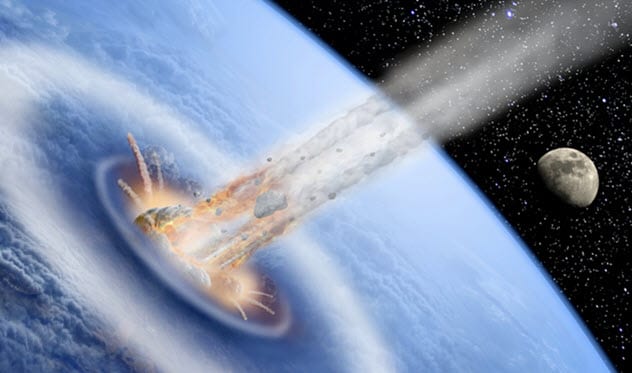
Currently, the earliest sign of life on Earth is from 3.83 billion years ago. During this period, a series of formidable meteor showers occurred. This heavy barrage of comets colliding into Earth suggests that any life that was forming at that time would have certainly faced extinction.
Remember the dinosaurs? Meteors are no joke. That was just one meteor the size of Mount Everest, but it made the Earth’s surface hotter than the Sun after crashing “20 times faster than a bullet.” While it seems apparent that these fireballs of fury snuffed out any life on Earth, they may have also been vessels for the life to come.
Evolution is agonizingly slow. It took several billion years for single-cell life to become multicellular, for example. So, how is it that directly after the most epic meteor shower our planet has ever seen, Earth was ripe and ready to spontaneously spawn DNA-based life? The planet hardly had time to cool down enough to support life, let alone create it.
The period of meteor showers ended sometime earlier than approximately 3.8 billion years ago. Evidence of life shows up in the fossil records from 3.83 billion years ago. If Earth was cooling down then, life evolved in the blink of an eye from an evolutionary standpoint. Unless, of course, life had already arrived. Many scientists hold these ancient fossil records as evidence of panspermia.[1]
9 We Are Not Alone
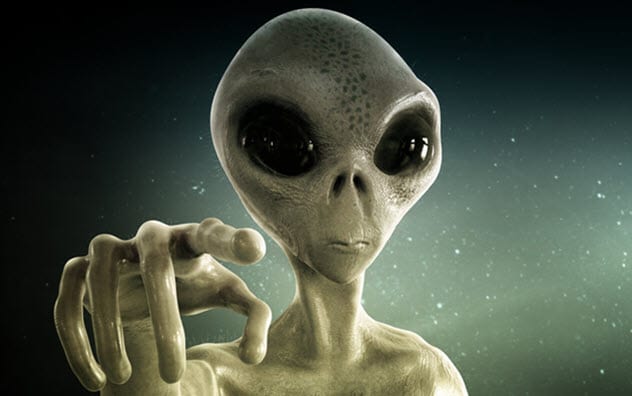
In our lifetime, space experts predict that we will discover alien life. The more we learn, the more unlikely that we are all alone on our tiny blue marble in the vastness of space. NASA astronomer Kevin Hand even said, “I think in the next 20 years, we will find out we are not alone in the universe.”[2]
Extrasolar planets (aka exoplanets) are those that orbit around a star like our Sun. The first one was discovered in 1995. Today, we’ve observed around 4,000 exoplanets. More than 50 are Earth-sized planets.
In 2014, NASA observed a planet the size of Earth orbiting a sun just like ours right in the sweet spot of the habitable zone. We are getting closer every year to fundamentally shifting how humanity sees itself in the universe. It’s just a matter of waiting.
8 Life Can Survive On An Asteroid
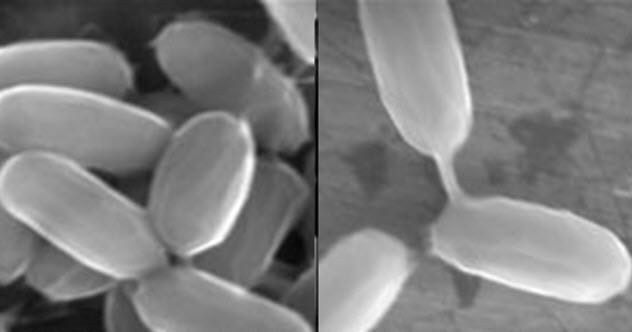
There have been a lot of studies about life enduring the journey through space on an asteroid’s back. It appears to be possible. Gerda Horneck, a microbiologist for the German Aerospace Center, discovered that bacteria can survive in space for years.
In the 1980s, she sent living organisms to live on a NASA satellite. Without nutrients, the bacteria formed resilient spores that acted as a defensive shell. Intense ultraviolet rays killed the top layer of spores, but the dead spores only strengthened the outer layer to shield the life within. After six years, those stubborn bacteria had survived the frigid vacuum of space—to everyone’s disbelief.[3]
Tardigrades (aka “water bears”) can also survive UV exposure with no problem. But if a microorganism was shielded from the UV rays, as it would be inside, say, a meteor, it would be even easier to survive. Some studies suggest that microbes hitching a ride deep within a meteor could even survive hundreds of millions of years in a dormant state.
7 Surviving Impact Is Possible
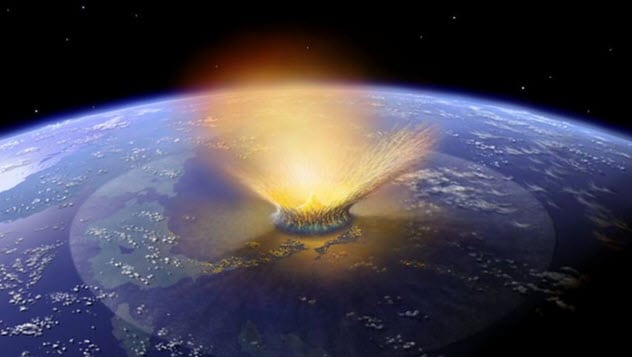
Dina Pasini, a researcher at the University of Kent, has already learned that algae spores could hypothetically survive a meteor crash. Her team decided to use a single-celled, ocean-dwelling algae to mimic the conditions of early life.
First, they constructed pellets made of rock and ice embedded with the algae. Then they used a two-stage light gas gun to accelerate objects to incredible speeds.
They shot the pellets through the water at 6.93 kilometers per second (4.31 mps). Miraculously, not all the spores were killed off. The higher the speed, though, the more that died. Still, there were survivors.
Pasini asks, “If we find life on another planet, will it be truly alien or will it be related to us? And if so, did it spawn us or did we spawn it? We cannot answer these questions just now, but the questions are not as far-fetched as one might assume.”[4]
6 Martian Contamination
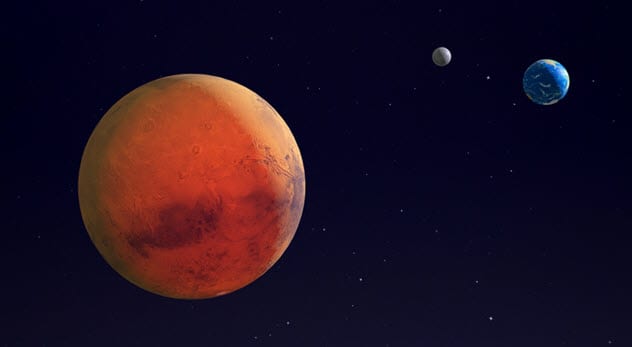
Mars is the best contender for ballistic panspermia—that is, the spreading of life from planet to planet within our solar system. In their youth, Mars and Earth were both watery worlds with the potential for harboring life. It’s perfectly plausible that Mars just did it first. Then the building blocks of life hitched a ride to Earth. Technically speaking, that would make us “Martians.”
In 1984, a meteorite was discovered in Antarctica that had broken apart from Mars about four billion years ago. Some astrobiologists claim that it contains the ingredients of ancient life in the form of fossilized microbes. MIT is funding research to explore the possibility that life on Earth came from Mars. They invented a detection tool to sample the surface of Mars in search of DNA and RNA, the building blocks of life.
Getting Martian material to Earth is actually pretty darn easy. At NASA’s Ames Research Center, scientists who are working on the question of ballistic panspermia estimate that up to 5 percent of the rocks launched from Mars land on Earth within 10 million years. Some rocks can even arrive in just several years.
In the first 500 million years of our solar system, 50 billion Martian rocks landed on Earth. Four billion years later, five billion more Martian meteorites collided with Earth. Long story short, if life did exist on Mars first, it would’ve had ample opportunity to repeatedly contaminate Earth. Cue the song: “Is There Life On Mars?”[5]
5 A Recent Interstellar Visitor
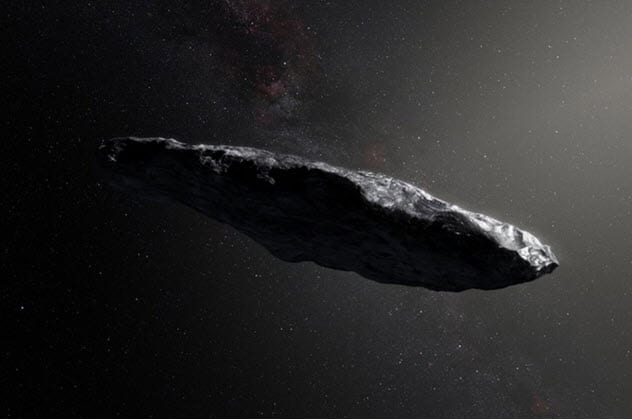
A short time ago, there was an uproar about the first known interstellar visitor to the solar system. They called the cigar-shaped object “Oumuamua.” It was estimated to be about 800 meters (2,600 ft) long.
It looked eerily like Stanley Kubrick’s monolith from 2001: A Space Odyssey, and it didn’t help matters that it appeared to move at “nongravitational acceleration.” Rumors of an alien spacecraft couldn’t be avoided, but researchers speculated that its weird movements were actually due to a phenomenon called outgassing.
Researchers could also tell that the object was made of ice. Karen Meech, an astrobiologist for the University of Hawaii’s Institute for Astronomy, said, “This tells us that ices can survive over these interstellar distances.” Not to mention, the object is assumed to have thermal insulation and act as a radiation shield.
So Meech suggests that the idea of an interstellar object containing some living organism isn’t out of the realm of possibility. She said, “Some living organism . . . could be preserved in a cold deep freeze.”[6]
Oumuamua serves as a shining example that perhaps life could have traveled to Earth a long time ago from a galaxy far, far away.
4 Genetic Material Found In Meteorite
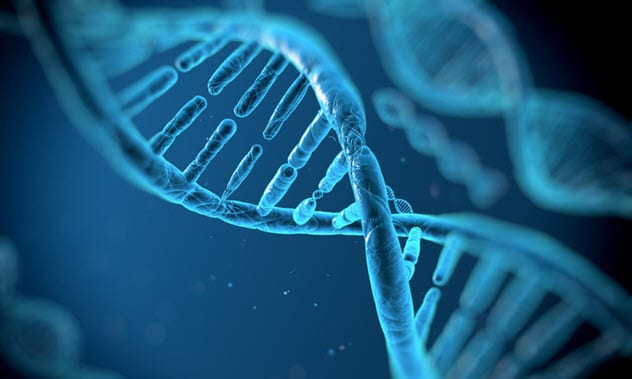
In 1969, a meteorite that crashed into Earth was found to contain the raw genetic materials of life. That’s not even the craziest part. These carbon-based components, like sugars and amino acids, are thought to have formed in outer space while tethered to the meteor.
Zita Martins, a chemist and astrobiologist at Imperial College London, said, “It really clarifies at least that the building blocks of genetic material, the nucleobases, were available [in early Earth]. We are not saying that only meteorites contributed to the building blocks of life, but it’s a very great contribution.”[7]
The finding increases the likelihood that the epic meteor shower of four billion years ago seeded ancient Earth with DNA building blocks. What’s more, life may have originally taken shape while traveling through space instead of on another planet. Then the ingredients landed on Earth on the back of a shooting star.
3 Organic Molecules And Amino Acid Discovered In Space Cloud
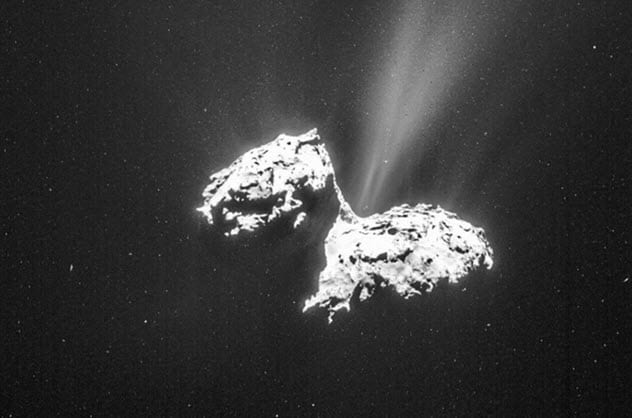
“The Stardust” is the name that scientists gave the samples that were taken from the dusty, gaseous cloud surrounding a comet. Impressively, these particular samples contained complex organic molecules and phosphorus as well as an amino acid.
Amino acids are the basis of proteins, which are essential to life. This crucial discovery supports the panspermia theory. Kathrin Altwegg, the principal investigator for this space mission, said:
With all the organics, amino acid, and phosphorus, we can say that the comet really contains everything to produce life—except energy. [ . . . ] But once you have the comet in a warm place—let’s say it drops into the ocean—then these molecules get free, they get mobile, they can react, and maybe that’s how life starts.[8]
It seems likely that the molecular building blocks of life are as common in space as stardust.
2 The Bubble Pattern Clue
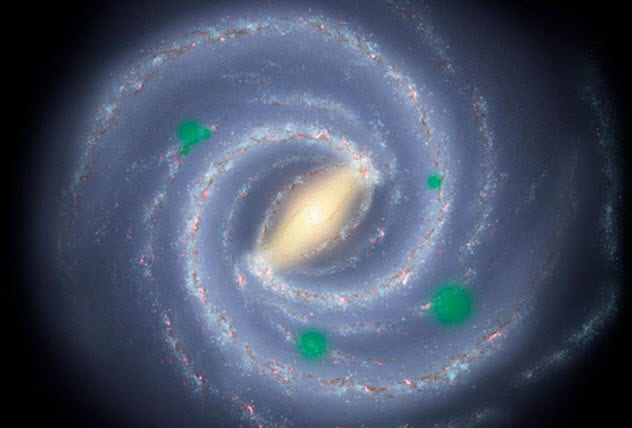
Jeffrey Moore, a planetary geologist for the NASA Ames Research Center, described panspermia as “reasonable by virtually everybody. Say you have several places in the solar system where organisms could multiply. Once one gets it, all the planets and moons with suitable environments come down with life. [ . . . ] They infect each other.”
Henry Lin and Abraham Loeb of Harvard University are avid supporters of the panspermia hypothesis. They even developed a testable model to prove the theory.
According to their model, if life shows up on a few planets and hops over to others, then the life-bearing planets form clumpy patterns. Spherical regions would appear as voids between the bubble patterns of life. This distribution would be a “smoking gun” for panspermia.
If life is spreading between planets, the populated worlds would cluster together in the vastness of space like colonies of bacteria in a Petri dish. Lin Loeb said:
It’s not that different from an epidemic. If there’s a virus, you have a good idea that one of your neighbors will have a virus, too. If the Earth is seeding life, or vice versa, there’s a good chance immediate neighbors will also have signs of life.[9]
So, if life appears in these clusters of solar systems, we’ll have the panspermia hypothesis confirmed. All we need to do is keeping looking toward the skies.
1 Stephen Hawking Endorsed Panspermia

Panspermia isn’t a new concept. It was first discussed by the ancient Greek philosopher Anaxagoras in 500 BC. In 1903, it was dubbed “panspermia” by Nobel laureate Svante Arrhenius. His poetic vision was of plants and germs gently drifting through space by the mere pressure of starlight, so panspermia is Greek for “seeds everywhere.”
Today, the definition of panspermia as life spreading from planet to planet or even stellar system to stellar system continues to be a viable hypothesis supported by some of the greatest modern minds.
Prominent scientists at MIT, Harvard, and NASA are convinced enough that they’ve invested a decade of research and funding into the possibility. Even Stephen Hawking held the belief that life on Earth did not begin on this planet.
Hawking suspected that ballistic panspermia was the answer. In a lecture, he touched on some of the points given above, but his belief seemed to stem from the timing of life’s origin. The earliest fossil evidence of life appears a mere 500 million years after the Earth’s temperatures became stable enough to support life.
Hawking said, “Life could have taken seven billion years to develop, and still have left time to evolve to beings like us. [ . . . ] If the probability of life developing on a given planet is very small, why did it happen on Earth in about one-fourteenth of the time available?”[10]
Basically, the evolutionary timeline just doesn’t add up. As technology develops at a breakneck pace, the hypothesis of panspermia may be confirmed sooner than we think.
Read more misconceptions and mysteries about outer space on 10 Cosmic Misconceptions About Outer Space and Top 10 Mysteries of Outer Space.








